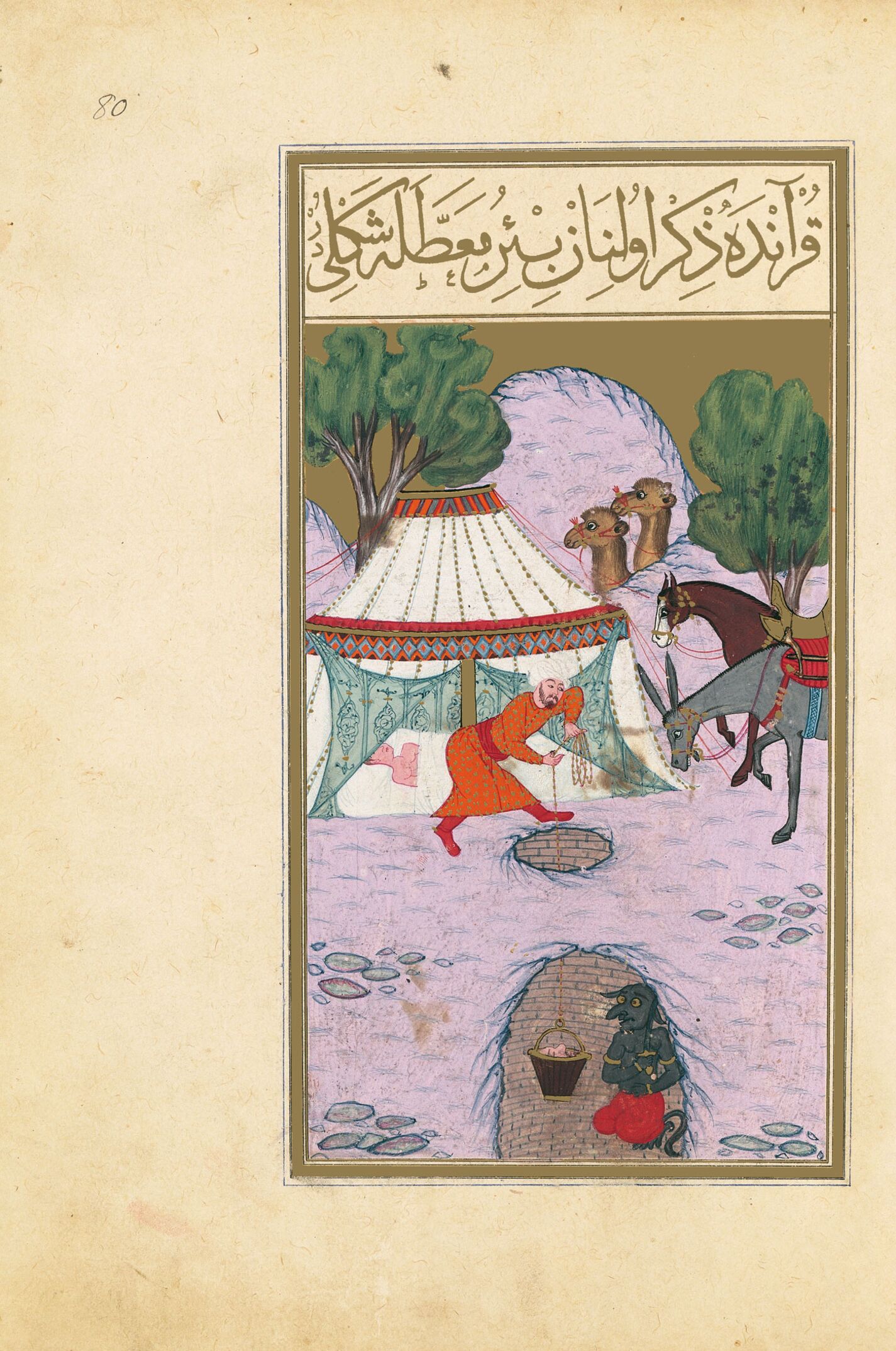The story of the abandoned well is briefly mentioned in the Koran (Sura 22, verse 45) and was elaborated upon by several authors, including Kisa’i in the Qisas al-anbiya’ (The Tales of the Prophets) which became a popular, illustrated book in the reign of Murad III like the present manuscript. The title of the miniature clearly refers to the Abandoned Well although how it relates to the story is not as obvious. A man called Hanzala went to Mecca from his tribal home of Aden on the southwestern tip of the Arabian peninsula but had a vision telling him to return home because his tribe had started to worship idols. He did so and preached to them but was killed, and God in revenge dried up a well that was vital for their sustenance.
The evil acts of Hanzala’s tribe are emphasized by what seems to be the illustration of their punishment, depicting a man unaware that the bucket being raised from the well contains a human head instead of water. The bottom of the well, conveniently visible through a cross-section in the ground, is guarded by a jinn holding a sword, although his role in the story is unclear. The scene is set in a landscape with sparse pebbles in the foreground and the usual trees and hills in the background, but it is dominated by a large, elaborate yurt made of white felt with another man asleep inside. The heads of two camels appear from behind a hill and the forequarters of a horse and a donkey are depicted to the right of the tent, emphasizing the remote location of the well.
Stefano Carboni
The Metropolitan Museum of Art
Curatorial Assistant in Islamic Art
(Fragment of the Book of Felicity commentary volume)

The story of the abandoned well is briefly mentioned in the Koran (Sura 22, verse 45) and was elaborated upon by several authors, including Kisa’i in the Qisas al-anbiya’ (The Tales of the Prophets) which became a popular, illustrated book in the reign of Murad III like the present manuscript. The title of the miniature clearly refers to the Abandoned Well although how it relates to the story is not as obvious. A man called Hanzala went to Mecca from his tribal home of Aden on the southwestern tip of the Arabian peninsula but had a vision telling him to return home because his tribe had started to worship idols. He did so and preached to them but was killed, and God in revenge dried up a well that was vital for their sustenance.
The evil acts of Hanzala’s tribe are emphasized by what seems to be the illustration of their punishment, depicting a man unaware that the bucket being raised from the well contains a human head instead of water. The bottom of the well, conveniently visible through a cross-section in the ground, is guarded by a jinn holding a sword, although his role in the story is unclear. The scene is set in a landscape with sparse pebbles in the foreground and the usual trees and hills in the background, but it is dominated by a large, elaborate yurt made of white felt with another man asleep inside. The heads of two camels appear from behind a hill and the forequarters of a horse and a donkey are depicted to the right of the tent, emphasizing the remote location of the well.
Stefano Carboni
The Metropolitan Museum of Art
Curatorial Assistant in Islamic Art
(Fragment of the Book of Felicity commentary volume)